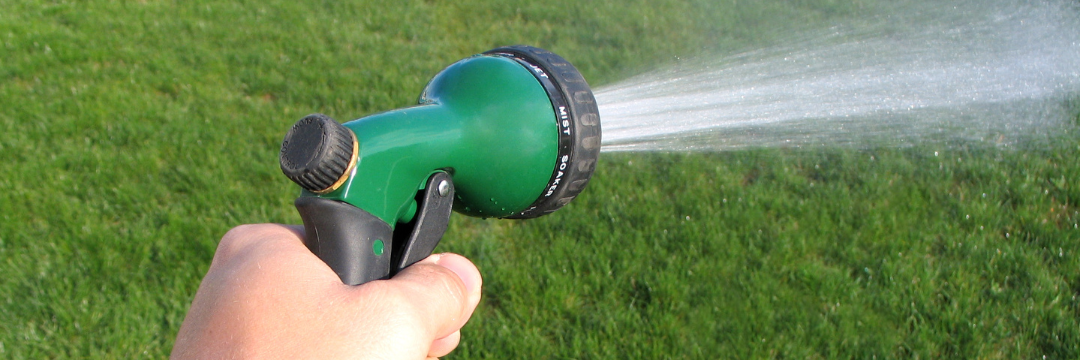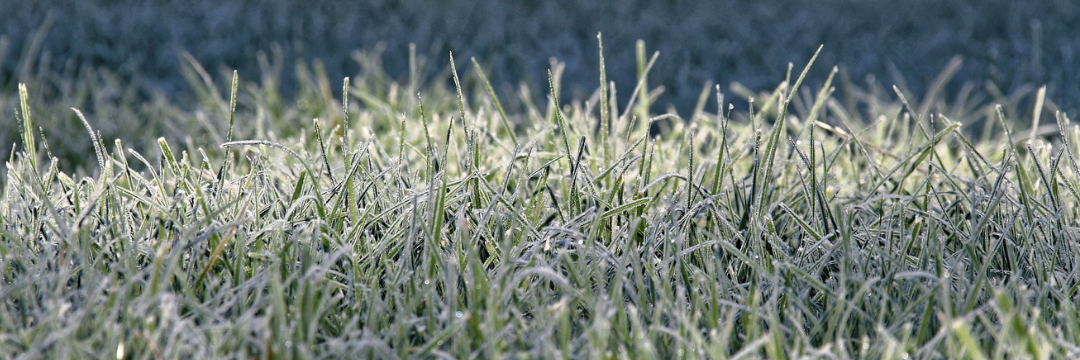Welcome to your new lawn. Our complete guide to lawn grass maintenance & aftercare will help ensure your newly laid lawn remains healthy and stunning throughout the year. Our essential tips on how to care for new turf include: watering, mowing, fertilisation and additional seasonal care.
Watering
Turf is a living plant that requires consistent moisture during the initial rooting phase. Keep your lawn well watered, particularly if it’s on a slope due to the runoff. Water your turf daily for the first three weeks using a sprinkler to ensure even coverage. Insufficient watering can cause shrinkage and yellowing, more so on warm days. If your lawn turns yellow/brown or has a thinner sward, apply extra water to balance the nitrogen fertiliser that has been pre-applied to your turf. See our full guide to watering your new turf here.
Mowing
You can start mowing your grass 3 weeks after laying it. Never cut more than one third of the length at one time as this can cause stress to the turf. Gradually adjust the mower to reach the ideal length of 30mm. This helps maintain a thick, healthy sward that prevents the grass from becoming straggly and unsightly. See our full guide with lawn mowing tips here.
Feeding
Your lawn turf is produced pre-fertilised so will not require any fertiliser for at least 3 months. Generally, after this time you can begin applying fertilisers according to manufacturers directions. We recommend using a fertiliser spreader as hand spreading will be uneven and invariably cause scorching of the grass or uneven colour and growth. Our turf fertiliser is available here.
Seasonal Care
April to September (Growing Season)
This period demands extra attention with more frequent watering and mowing as the weather aids rapid growth. Turf laid during dry weather must be thoroughly soaked daily for up to 3 weeks. Use appropriate equipment, a sprinkler is the best way to cover the lawn evenly. If you don’t apply enough water the turf will quickly shrink in size, then go brown and dry. Gaps will mainly appear around the edges. Our summer watering guide is here.
October to March (Dormant Season)
During the colder months, try to keep off the grass to prevent depressions. Turf laid during this time will take longer to establish as the roots do not grow as quickly as in the summer. Weather is generally cold and wet, so having to water your turf is unlikely to be necessary. If you need to carry out work in your borders then use a turf laying board to stand on as it will spread the weight across the grass. Our full guide for laying turf in winter is here.
Snow & Frost
Avoid walking on the lawn during frosty weather as it can damage the turf. Any brown patches from frost or snow should recover with the return of warmer weather and regular mowing in Spring. Our full guide for laying turf in winter is here.
Did You Know We Also Supply?
We also supply and deliver other products suited for your garden’s health and aesthetics. Screened topsoil that is ideal for rejuvenating soil prior to turfing, or adding to flower borders. A varied range of decorative stone from spey chippings to cotswold buff. Excellent mulch for use around shrub areas and trees. We even have some timber products including railway sleepers for building raised beds.
For any other hints and tips don’t hesitate to contact us. You can also keep up to date with us on Facebook by following us.
Contact Us for Landscaping Advice
- Telephone: 01236 452269
- Email: sales@mitchellturf.co.uk






